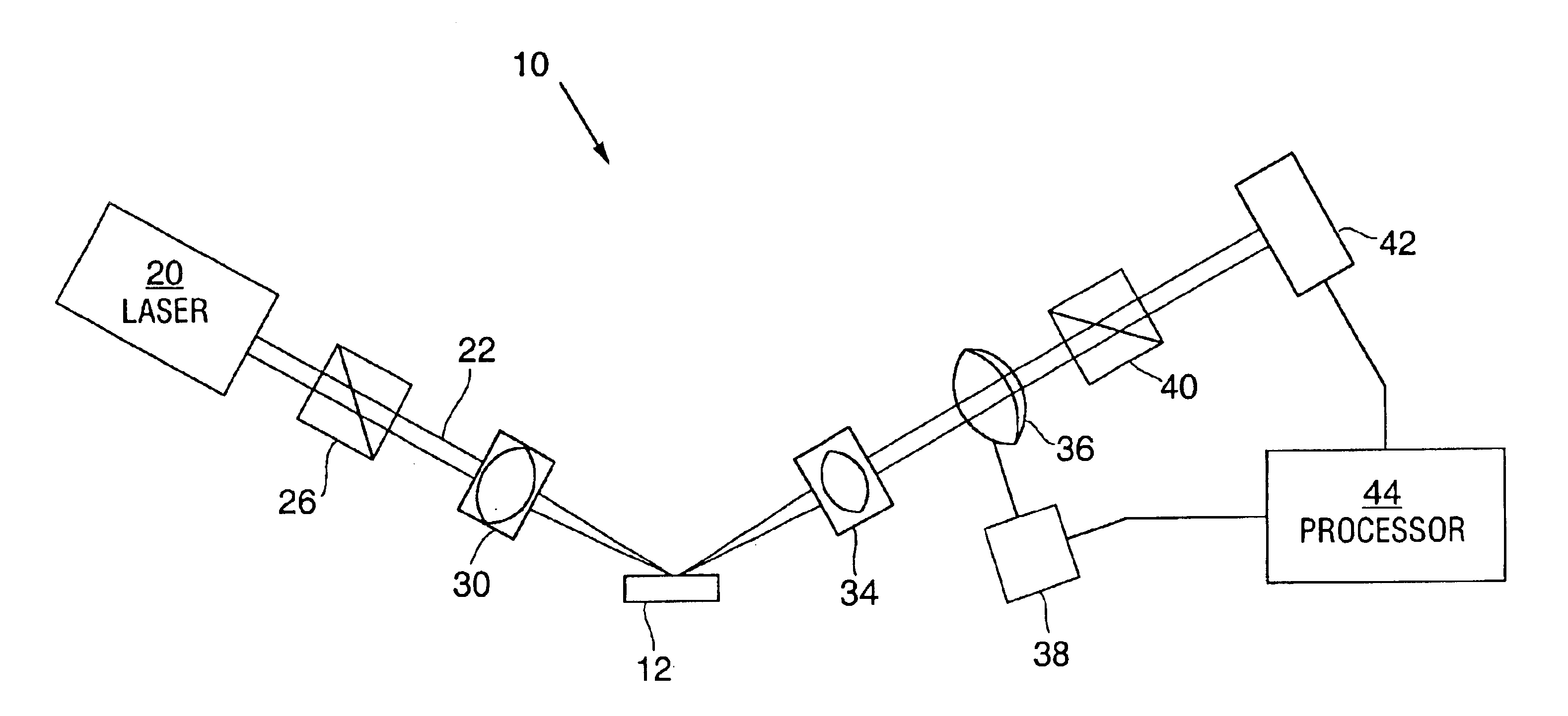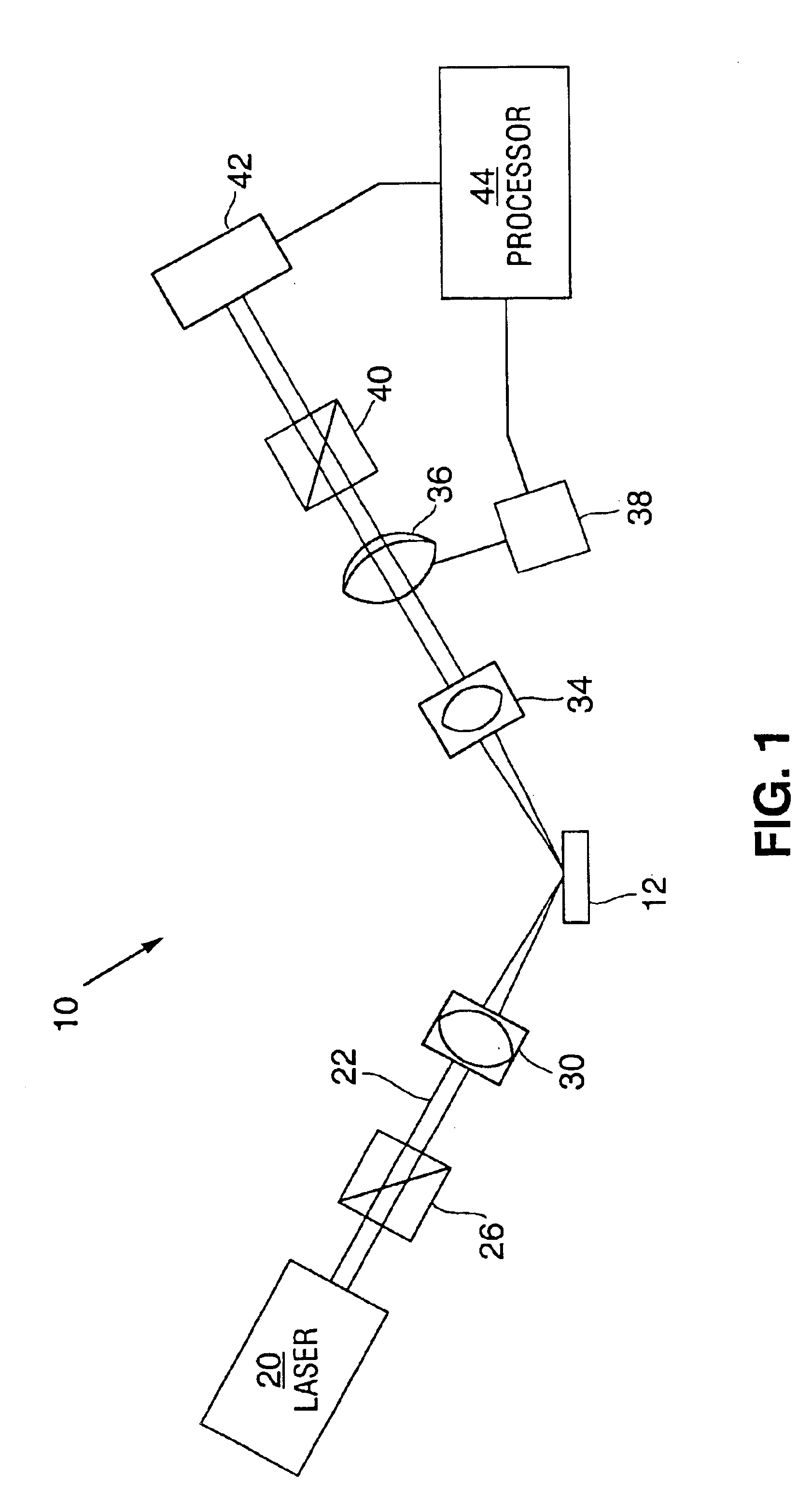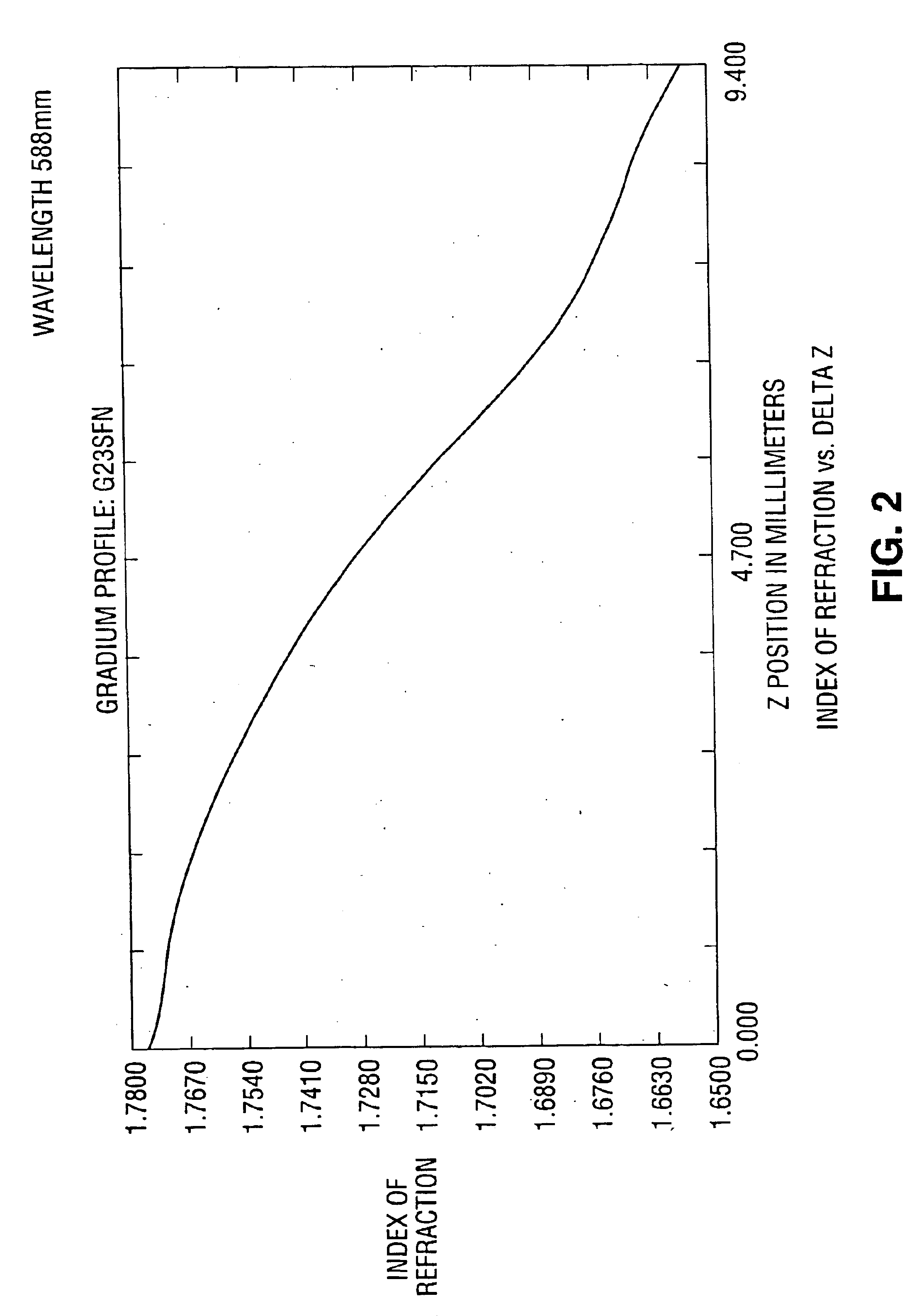Small spot ellipsometer
- Summary
- Abstract
- Description
- Claims
- Application Information
AI Technical Summary
Benefits of technology
Problems solved by technology
Method used
Image
Examples
Embodiment Construction
Basic Ellipsometer Configurations
Referring to FIG. 1, there is illustrated an ellipsometer 10 constructed in accordance with the subject invention The ellipsometer includes a light source 20 for generating a probe beam 22 of light. In the preferred embodiment, light source 20 is a laser generating a wavelength stable probe beam. One example of such a laser is a helium-neon laser generating a probe beam having a wavelength of 633 nm.
The helium neon laser generates a very stable output wavelength which does not vary over time (i.e. varies less than 1%). Other gas discharge laser systems could be used. It would also be possible to use diode lasers since they generate a relatively coherent beam of light. At the present time, the wavelength output of diode lasers is less stable and effected by age and temperature and are therefore diode lasers are less desirable.
Beam 22 interacts with polarizer 26 to create a known polarization state. In the preferred embodiment, polarizer 26 is a linear...
PUM
 Login to View More
Login to View More Abstract
Description
Claims
Application Information
 Login to View More
Login to View More - R&D
- Intellectual Property
- Life Sciences
- Materials
- Tech Scout
- Unparalleled Data Quality
- Higher Quality Content
- 60% Fewer Hallucinations
Browse by: Latest US Patents, China's latest patents, Technical Efficacy Thesaurus, Application Domain, Technology Topic, Popular Technical Reports.
© 2025 PatSnap. All rights reserved.Legal|Privacy policy|Modern Slavery Act Transparency Statement|Sitemap|About US| Contact US: help@patsnap.com



